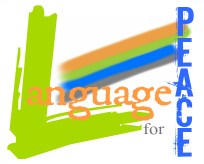For the things we have to learn before we can do them, we learn by doing them. (Aristotle)
Learning by doing is not a new concept. Artisans such as stonemasons, bakers, playwrights, songwriters, blacksmiths and tailors have mentored their apprentices in specialized crafts and in a workshop context for centuries. The items they created had practical applications but also focused on beauty and design. An artisan understood the craft – the art, the science, the usefulness. Excellent teachers are just like this. They are artisans- artful, knowledgeable, and skilled. They respond to the apprentices (students) in a way that encourages, teaches, and develops self confidence. Last, but not least, they themselves are learners.
So what is the connection of this to language, peace building and peace education? A workshop philosophy in education honours the fundamental characteristics of what a workshop entails: learning by doing, honouring diversity, engaging in purposeful tasks, problem solving, learning alongside others, demonstration, scaffolding learners, constructing meaning, gaining knowledge, trust in the learner, and developing a sense of agency or disposition towards, “This is possible.” “A child must have some version of, “Yes, I imagine I can do this.” And a teacher must also view the present child as competent and on that basis imagine new possibilities.” (Dyson,1999, pp. 396-397). There is a need for us all to feel that there is a relationship between what we do and what happens. Peter Johnston says, “Teachers’ conversations with children help the children build the bridges between action and consequence that develop their sense of agency. They show children how, by acting strategically, they accomplish things, and at the same time, that they are the kind of person who accomplishes things.” (Johnston, 2004, p.30).
As teachers, we need to be intentional about the language we use with our students. We listen to what the children say and observe what they are doing. We think about what is most important to praise them for, what to help them with, and what to teach that is new. Our response is crucial because even a single word in a message that we communicate can change how the message may be interpreted. Take, for example, this response to a student (Johnston, pp. 34-35):
You really have me interested in this character (in your writing) because of the things he says, but show me how he says them and what he looks like, and I will get an even stronger sense of him.
Now look at the slight difference in this response:
You really have me interested in this character (in your writing) because of the things he says, but and if you show me how he says them and what he looks like, I will get an even stronger sense of him.
The first version of this statement begins with what has been successful. However, the word “but” undermines the first part of the sentence. Changing it to “and” still affirms the first part, but opens the door to possibilities. The word “if” offers a choice and provides an instructional piece and the opportunity and time for the student to try it out.
It may seem like a giant leap to say that this can lead to a peaceful classroom, but if we want children to develop a disposition towards “I can make a difference”, we must be aware of our language and its influence on children’s sense of agency. It may begin with how they feel about academic progress or behavior in the classroom, but has the potential to extend to their feelings about social issues in their communities and in a broader world.
Now before we become overly self-conscious about each word we speak, let’s remember we are learners. By being reflective and learning as we practice, we can refine the artistry of teaching by paying attention to our oral interactions with children. For the things we have to learn before we can do them, we learn by doing them. Here is a beginning list of those I consider to be my mentors in this area:
- Allen, Patrick (2009). Conferring: The Keystone of Reader’s Workshop. Portland, ME: Stenhouse.
- Dyson, Ann (1993). Social Worlds of Children Learning to Write in an Urban Primary School. New York: Teachers College Press.
- Johnston, Peter (2004). Choice Words. Portland, ME: Stenhouse.
- Miller, Debbie (2013). Reading with Meaning 2nd Ed. Portland, ME: Stenhouse.

Reblogged this on Laurie Woodward and commented:
When children are actively engaged in learning, amazing things happen.
LikeLike
Posted by lauriewoodwardauthor | March 13, 2016, 11:14 am